|
Article by Sea Grant
Great Lakes charter boat captains are in the business of finding fish. They take recreational anglers out on the lakes, finding spots with the highest likelihood of landing a great catch. So how do they know where to go? Do they have a crystal fish ball? Though many captains have years of experience on the lakes, they also rely on technology to pinpoint specific locations. Many captains use websites like the Great Lakes Observing System (GLOS) or CoastWatch to obtain maps with Great Lakes surface water temperatures. They know that, because fish are cold-blooded, they are very dependent on the environment and particularly water temperatures. Other certain environmental factors also dictate where fish feed. Grade Levels:
Performance Expectations:
OBJECTIVES
BACKGROUND Steelhead trout belong to the family Salmonidae that includes all salmon, trout and chars. Steelhead are born in freshwater streams, where they spend the first years of life. They then swim out to the ocean or one of the Great Lakes where most of their growth occurs. Steelhead are also known as rainbow trout. However, they are typically called steelhead when they spend most of their lives in the open waters of the Great Lakes. Their life cycle is similar to that of Pacific salmon. Steelheads are indigenous to the Pacific coasts of North America and Asia, and have been successfully introduced to inland lakes like the Great Lakes. After spending between one to four growing seasons in the ocean or lake, steelhead return to their native freshwater stream to spawn. Though they are not native to the Great Lakes, Lake Michigan steelhead live a life that is very similar to that of their ocean-going relatives. Lake Michigan serves as a substitute for the ocean and they return to spawn in tributary streams. Steelhead in Lake Michigan – What Anglers Need to Know Think about being a charter captain or someone on the hunt for steelhead in Lake Michigan. What are the basics you should know? Scientific Name: Oncorhynchus mykiss. Members of the Salmonidae family include salmon, trout and char. Also called rainbow trout. Identifying Characteristics: Two dorsal fins, including an adipose fin, light-colored mouth and gums, small spots on tail. Average Size: Growth varies greatly, even within the same population. Mature fish are typically 16 inches in length and about 9-10 pounds, but may reach 36 inches and up to 20 pounds (40 centimeters and 4-5 kilograms, up to 91 centimeters and 9 kilograms). Lifespan: Typically 6-8 years in the Great Lakes region. Habitat: During the lake-dwelling portion of their lives, steelhead are often found in waters less than 35 feet (11 meters) deep with temperatures of 58-62 degrees Fahrenheit (F) or 14-17 degrees Celsius (C). In the spring and summer, steelhead are often found near stream outlets prior to moving upstream to spawn. Life Cycle: Steelhead mature in 3-5 years. Most steelhead return to their home stream — the stream in which they were born or planted — to spawn. Unlike Pacific salmon, steelhead in the Great Lakes do not necessarily die after spawning and are able to spawn more than once. A steelhead may spawn several times during its life, although most only spawn once or twice. Steelhead in the Great Lakes enter spawning streams between late October and early May. Most spawning occurs in the spring, with the peak of spawning occurring in mid-April. Eggs hatch in 4-7 weeks. Young steelhead, called parr, typically remain in their home stream for 1-3 years before migrating to the lake. Diet: Young steelhead feed on zooplankton and aquatic insects. During the lake-dwelling portion of their life cycle, steelhead eat small fish and insects. Steelhead feed primarily at mid-depths (the middle of the water column), but will also feed on surface insects. Feeding Strategy: Compared with salmon, steelhead have a slow attack speed. This makes them less-than-efficient predators of quick fish such as alewives and smelt. While most salmon are quick and efficient predators and can successfully hunt schools of small fish closer to shore, steelhead move to deeper waters to feed on an accumulation of bugs and slower fish, such as sticklebacks. Predators: In the Great Lakes, sea lamprey are the most common predator of all salmonid species. Other predators include: larger fish, fish-eating birds such as great blue heron and kingfisher, and mammals such as mink and raccoon. Reading the Cues Aquatic habitats are defined by environmental factors. If you know what to look for, these factors can provide clues to help find the best fishing spots. For example, fish prefer habitats that are within the fish’s optimal temperature range and provide access to food. Due to interactions of abiotic factors such as temperature, oxygen, pH level, light, nutrients, pressure, substrate and circulation, aquatic life is not evenly distributed, i.e., it is patchy and variable depending on the other influences at play. Anglers report better catches at thermal fronts than in nonfrontal regions — movement of steelhead in open water seems to be associated with thermal fronts. Thermal fronts are where water masses with significantly different temperatures meet or interface. This interface is a region where water temperatures rapidly change and are often abundant with aquatic life. Thermal fronts can offer both optimal temperatures and access to food. The range of temperatures and abundant food at thermal fronts can be clues to help you find steelhead and other fish in the Salmonidae family. Upwelling
Later in the season, fishing is influenced by thermal fronts and water temperatures associated with upwelling:Figure 3. Upwelling and Ekman Transport Diagram (source: American Meteorological Society) Upwelling occurs when strong winds push away surface waters allowing deeper, colder waters to rise to the surface. A good example is near Big Sable Point in eastern Lake Michigan (north of Ludington). Upwelling occurs near the shore caused by strong winds from the east, northeast or northwest — any wind that moves the nearshore water offshore or any prolonged wind that causes a strong north to south current. The bathymetry near Big Sable Point contributes to a cold-water upwelling associated with strong winds from the east, northeast or northwest. Near Big Sable Point, Lake Michigan becomes very deep just offshore. As warm surface waters are pushed away by winds, colder bottom waters ‘upwell’ to the surface (Figure 4). Deep waters nearshore at Big Sable Point are key. As warm surface waters are pushed away by the wind, deep cold waters near shore upwell to the surface (see Big Sable Point bathymetry). South or southwest (or even straight west winds) cause warm water to ‘pile up’ in the bay. Under these conditions, warm waters will be found as deep as 150 feet or more (typical depth of warm water is 60-70 feet). Temperature is less of a fish-catching factor as summer becomes fall, because fish enter river mouths and many move upstream. So what does all of this have to do with catching steelhead? Prey is often abundant at thermal fronts and fish in the family Salmonidae, particularly steelhead in eastern Lake Michigan, seem to be attracted to spring thermal fronts to feed on insects that originate on land (terrestrial) rather than the water. (We know this because researchers found that terrestrial insects were abundant in steelhead stomachs in the spring.) Accumulation of these insects is thought to be related to the eastern central Lake Michigan shoreline. Insects along steep, sandy cliffs are caught in rising air currents, and as the air cools over colder lake waters, they are deposited into the lake, essentially raining down food for steelhead and other fish. HOW TO FIND FISH IN LAKE MICHIGAN Knowing this, how can we apply it to find fish? Commercial, subsistence and recreational fishermen use surface water temperatures and visual clues to find thermal fronts. How to detect water surface temperatures:
Learning about Great Lakes surface water temperature contour maps:
In the spring, fishing is best at thermal bars nearshore. Look for tight contour lines following the shoreline with a 10-degree temperature change over the course of the lines. Fishing is best in the area outside of the series of contour lines. Thermal bars may be present until mid-June or possibly early July. When waters reach 60 degrees F, thermal bars no longer form. In the summer and early fall, fishing is best at upwelling areas. Look for rings of cooler water nearshore. (Offshore rings are likely errors related to clouds. The bathymetry and currents in Lake Michigan do not support offshore upwelling.) Fish Finders – Lesson 1: Fish_Finders_Lesson_1 ACTIVITY
LESSON SOURCES CoastWatch. Great Lakes water temperatures. Michigan State University (MSU) Remote Sensing and GIS Research and Outreach Services in East Lansing, Michigan, NOAA Great Lakes Environmental Research Laboratory and Michigan Sea Grant. Supported by MSU College of Agriculture and Natural Resources and MSU Extension. Accessed December 4, 2009. Spring thermal fronts and salmonine sport catches in Lake Ontario. 1993. North American Journal of Fisheries Management 13: 502-510. Authors: Aultman, D.C. and J.M. Haynes. Food of trout and salmon in Lake Ontario. 1986. Journal of Great Lakes Research. 12:200-205. Author: Brandt, S.B. Fact sheet explaining latitude and longitude. 2007. Institute for Fisheries Research, University of Michigan School of Natural Resources and Environment and Michigan Department of National Resources. Author: Geddes, C. Springtime steelhead produce great fishing action. 2006. Michigan Department of National Resources and Environment. Website accessed December 4, 2009. Water on the Web: Monitoring Minnesota Lakes on the Internet and Training Water Science Technicians for the Future – A National Online Curriculum using Advanced Technologies and Real-time Data. University of Minnesota-Duluth, Duluth, MN 55812. Authors: Munson, BH, Axler, R, Hagley C, Host G, Merrick G, Richards C. Website accessed December 1, 2009. DATA SOURCES Big Sable Point bathymetry. Coastwatch. Great Lakes water temperatures. Michigan State University (MSU) Remote Sensing and GIS Research and Outreach Services in East Lansing, Michigan, NOAA Great Lakes Environmental Research Laboratory and Michigan Sea Grant. Supported by MSU College of Agriculture and Natural Resources and MSU Extension. HarborView. Great Lakes observing system (GLOS) and University of Wisconsin Sea Grant extension program. Author: David Hart University of Wisconsin Sea Grant extension program. National Oceanic and Atmospheric Administration (NOAA). National Data Buoy Center. US Department of Commerce, NOAA, National Weather Service, National Data Buoy Center, Stennis Space Center, MS National Oceanic and Atmospheric Administration (NOAA). On-line Chart Viewer. NOAA Office of Coast Survey. Michigan Sea Grant helps to foster economic growth and protect Michigan’s coastal, Great Lakes resources through education, research and outreach. A collaborative effort of the University of Michigan and Michigan State University, Michigan Sea Grant is part of the NOAA-National Sea Grant network of 34 university-based programs. These are the folks who contribute the most to make steelheading in Ontario as great as it is! A Great Lake revival
The demise of alewives and salmon in Lake Huron brought something nobody expected: An explosion of native species. Is Lake Michigan next? And could a more diverse ecosystem offer protection against Asian carp and other invaders? By Dan Egan of the Journal Sentinel staff Linwood, Mich. — Ernie Plant's eyes get wide when he talks about how spectacular Lake Huron's salmon fishing was back in the late 1980s, when his dad would take him up north on Friday nights after his high school football games. They'd spend fall weekends along the shore of the lake chasing the chinook that were chasing the alewives that ran so thick they even teemed in water-filled ditches along coastal roadways. A Watershed Moment Third of three parts Published Dec. 7, 2014
"We never had a boat," said the sales manager at Frank's Great Outdoors, a gear and bait shop north of Bay City. "But we didn't need one." When Lake Huron's salmon crashed a decade ago, Plant, who holds a degree in biology from Northern Michigan University, had no doubt the lake would eventually right itself and the fish would come back. And fish did return — but they weren't the fish Plant or many others expected. What has happened in the decade since the crash of Lake Huron's two dominant species — invasive Atlantic alewives and the giant Pacific salmon planted to gobble them up — is a remarkable story of nature's resilience. Efforts by lake managers to sustain the invasive alewives to keep the salmon fishing rolling had, for decades, pushed native species to the fringes. But when the alewife dwindled and the salmon followed, there was an almost instant surge in native lake trout, walleye, smallmouth bass, chubs and emerald shiners. "It all happened as soon as the alewives were gone," said Michigan Department of Natural Resources biologist Dave Fielder. "The natives started producing like crazy." The remarkable result is that today the top of the Lake Huron food chain more closely resembles its natural self than anytime since the lamprey and alewives invaded in the mid-1900s. Jim Johnson "Lake Huron's fishery," said Jim Johnson, a retired biologist with the Michigan DNR, "is more stable and robust in the past four or five years than it has been in a long time." It has everything to do with the disappearance of alewives, and little to do with Howard Tanner and Wayne Tody's grand salmon plan, crafted after alewives had over-run Lakes Michigan and Huron. Tanner said he was never interested in trying to bring back native species just because they were native. He wanted the best sport fishery he could fashion from the lakes — and for him that meant Pacific salmon. And that led to managing the lakes in a manner that would preserve the invasive alewives for the salmon to eat. Yesterday I had the pleasure of fishing with Robbie D of Big City Fishing, chasing down spring catfish on a smaller Lake Erie tributary. The fish were not in thick just yet but we had our share of battles with old whisker face. Some regions like the lower Grand River see early runs of catfish right after ice-out, but many of the lesser known and lesser fished waters get significant runs that are just starting heat up. Any creek or river with clay/mud bottoms and a good amount of near shore timber will host decent numbers of these fish. Catfish fishing in Southern Ontario is an excellent filler between spring trout fishing and early summer bass opener. They are not the most glamorous fish available in the Great Lakes region but they sure will give you all the fight you can handle, and then some! These are not the little brown bullhead or mudcats that you incidentally catch when live bait fishing. These are big angry and very explosive fish when first hooked, and they don't let off until you put the clamps on them. The average fish is between 7-10lbs but often exceed 15-20lbs. Heavy gear is the order of the day when angling for these beasts. A 9' M/H rod, a 300/3000 series reel or better, spooled with 30lb braid is an adequate set up to tame these big kitties. We use an assortment of cut-bait, dead minnows, shrimp style baits, and anything else with a heavy oily fish smell. Pautzke Nectar is an excellent bait rejuvantor for baits that have been soaking for too long, or to give that added kick. Size 3/0-5/0 hooks work well for hooking these large meaty servings, and we suspend them under a float. Split shot may or may not be necessary depending on the depths fished. Canoes and kayaks are an excellent stealth approach for getting right on top of these fish where you need to be. Allowing you run your presentation under float with no unnatural movement as you drift down the creek or river. Watch for the videos and more pics of this adventure coming on Big City Fishing. So if you are already bored with pike, and panfish aren't your thing, grab your paddling gear and head out for some spring cats to fill the void, or look up Nomad Adventures for your catfish fix! And be sure to bring extra hooks because the submerged timber rarely gives back!
Had a great time out with Rob Dankowsky of Big City Fishing this past week. We absolutely hammered the fish in a short span of just 3 hours of kayak fishing! Three huge Chinook Salmon came to the boat in the first forty minutes, followed by a smaller one. Lake Ontario grand slams were easy to come by on this trip, when just after that initial burst we had a plethora of Brown Trout, Coho Salmon and Lake Trout. Our timing was perfect having connected with 13 fish in total. Unfortunately the warm weather has arrived and now driven the fish out to deeper water in search of baitfish. Watch for this episode to air on Big City Fishing later in 2015 or early 2016.
We now shift our efforts to cooler waters of Lake Huron and the Niagara River in search of more salmon and trout. Be sure to book your next fishing adventure with Nomad Adventures! Air Temp: +3C @ 7am start, +8C @ 10am finish Wind: 20km/h NW dropping to 10km/h NW Water Temp: 40.6F @ 7am, 42F @ 10am Fish: 3 Chinook, 3 Coho, 1 Laker, plus many more caught by friends in just a 3 hour span. RECAP:
The Salmon bite was ON for Lake Ontario but only lasted a week with the warm temps that arrived over this past week. Book your Great Lakes salmon trip this fall or next spring with Nomad Adventures before they are gone! Fishing has improved dramatically in Southern Ontario over the past 10 days. We had our first group of the season out on Lake Ontario for some spring trolling. Air: 10C @ 7am start, 19C @ noon finish Wind: 20km/hr W or less Water: 43-48F Fish: Brown Trout, Lake Trout, Coho Salmon Baits: body baits 3-4" long Things will only get better now until June. Be sure to contact Nomad Adventures for your next fishing adventure!
|
FISHING NEWS ONTARIOOntario and Great Lakes region salmon, steelhead, and migratory trout fishing articles, information, news, and reports. Stay up to date on our most recent trips, events, tournaments, and general news on adventure fishing and kayak fishing in Ontario and Canada. Archives
April 2021
Categories
All
Links |

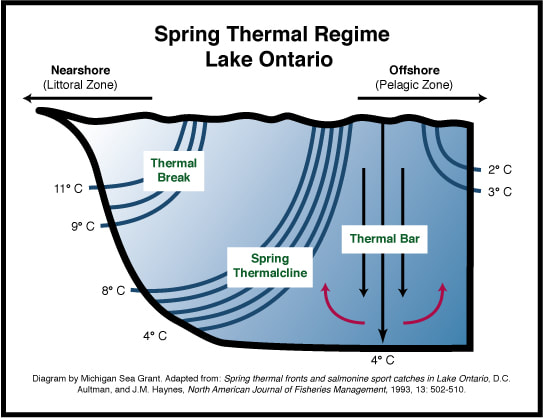
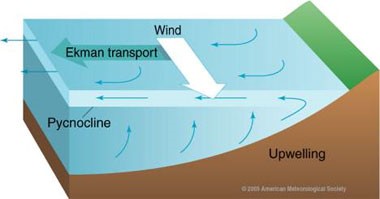
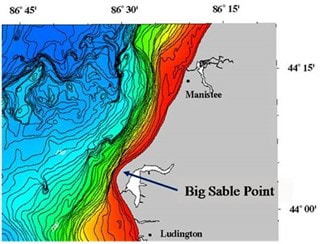
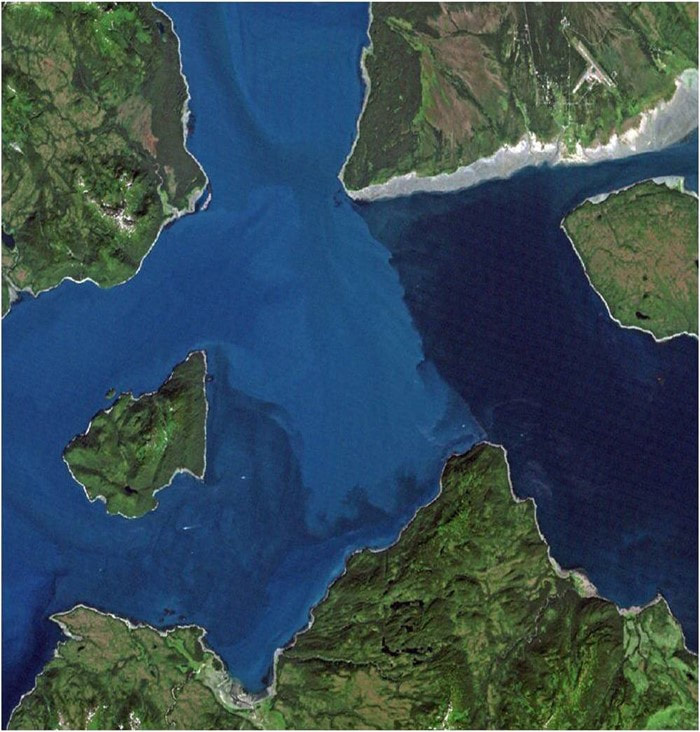
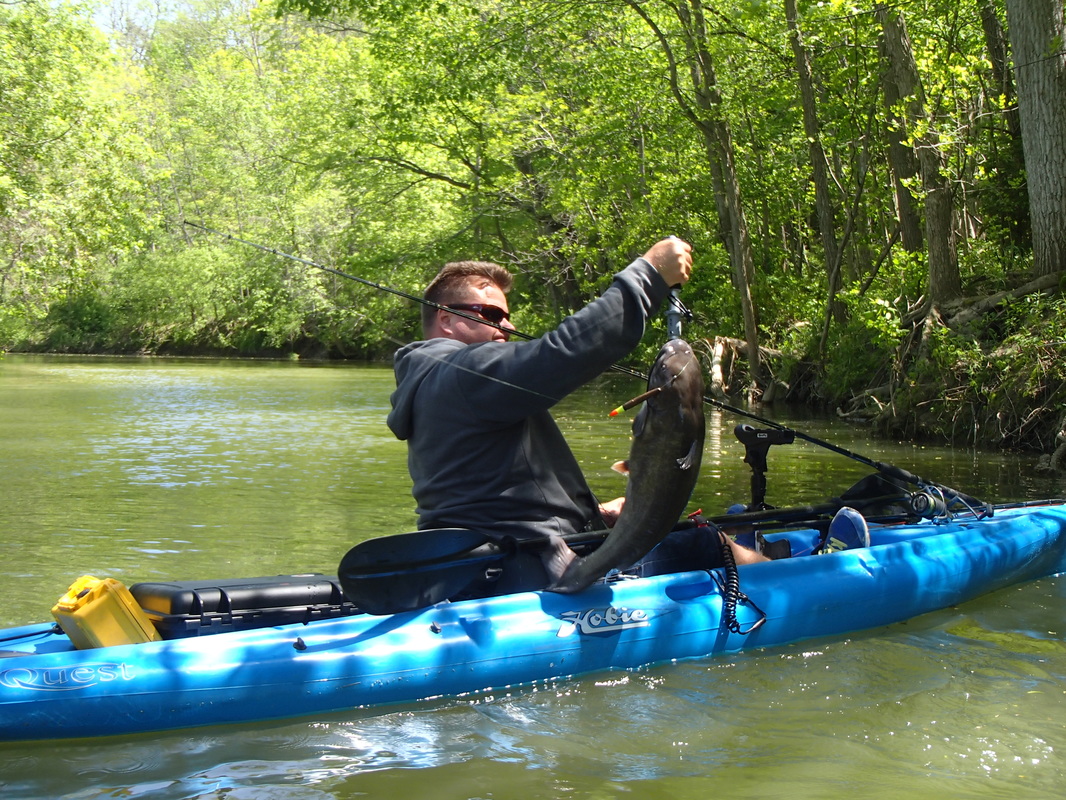
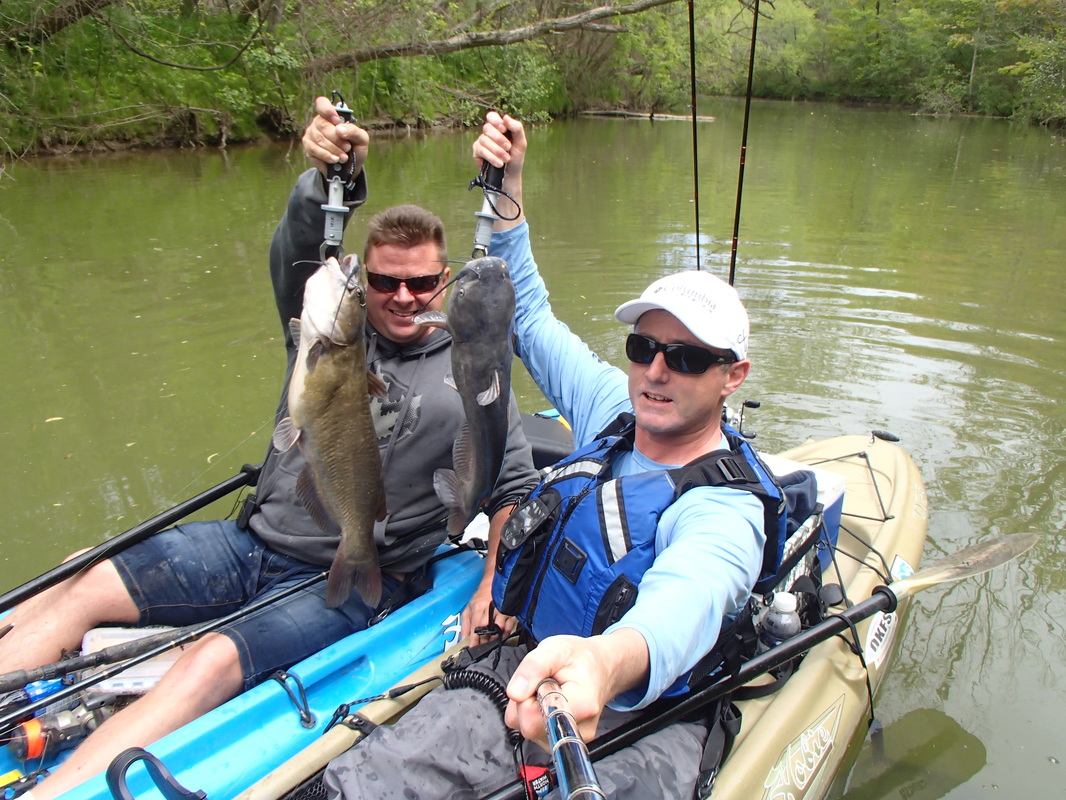
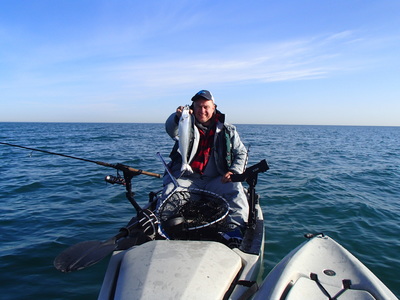
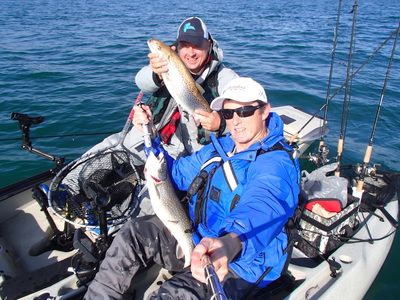
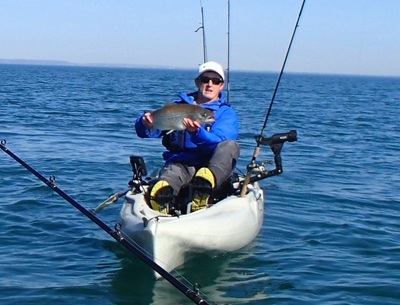
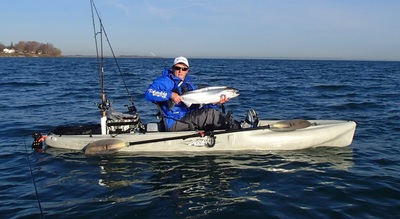
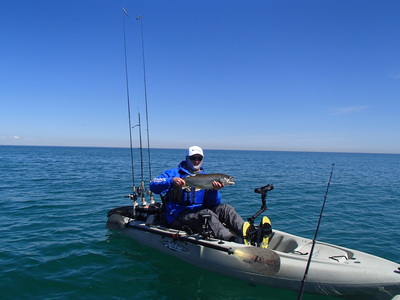
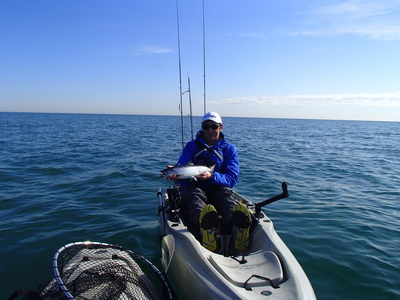
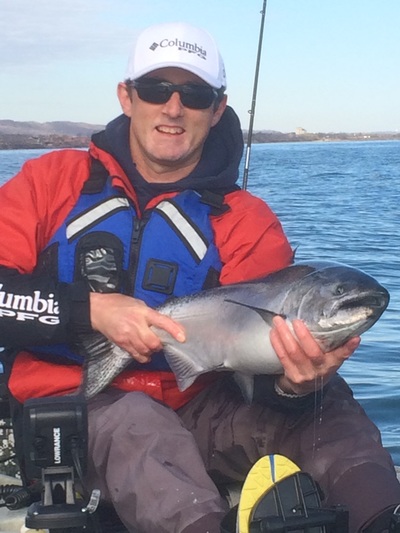
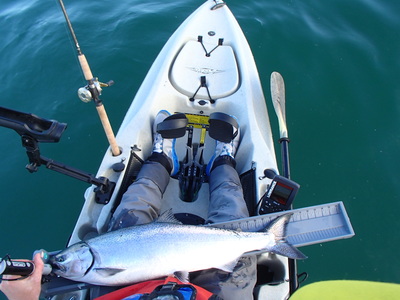
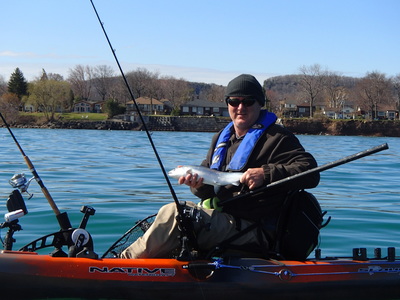
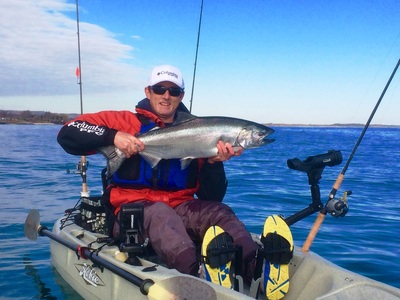
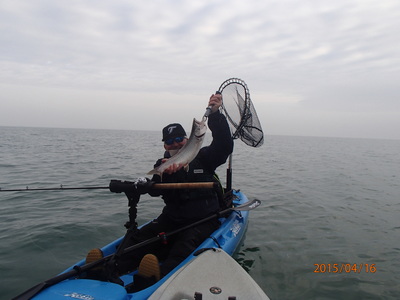
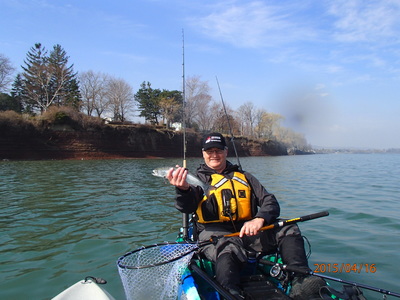
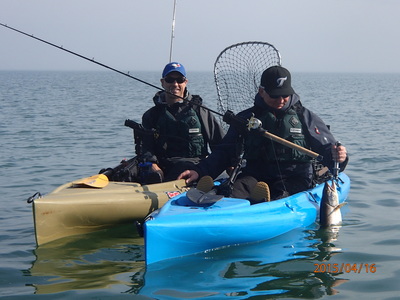
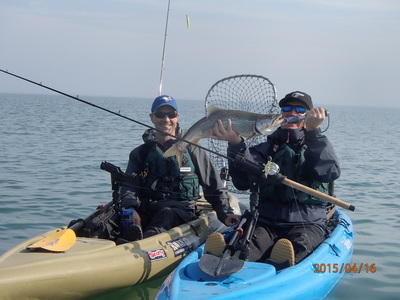
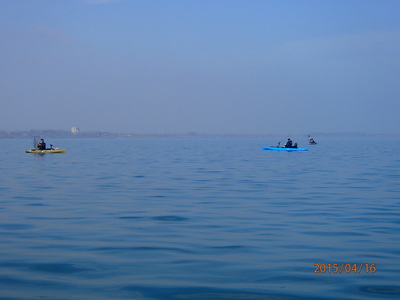
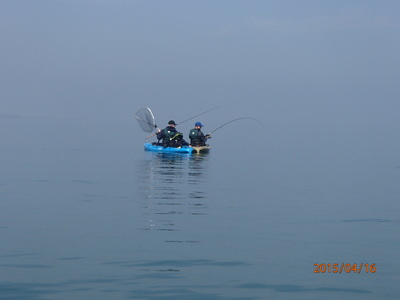
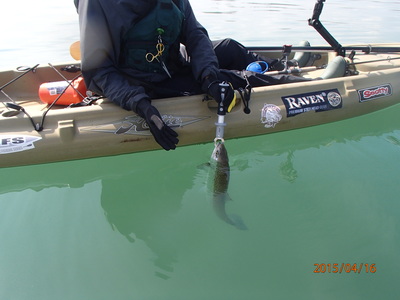
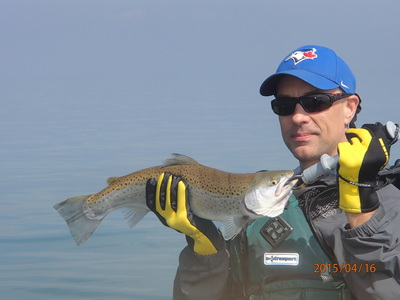
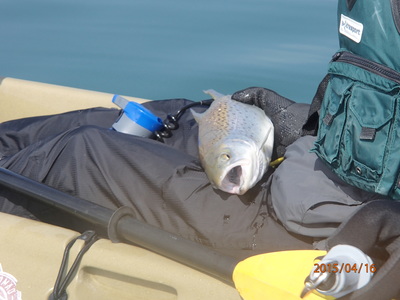



 RSS Feed
RSS Feed